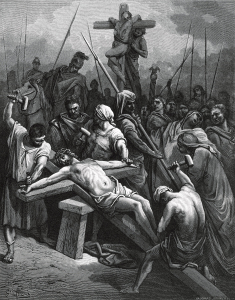In 2013 the 15,000-member Northland Church and Emmy-award winning filmmaker Bob Giguere teamed up to produce a video called Our Father’s World. I encourage you to take the time to view it. There is much inspiration and insight.
Here are a few things that struck me:
1. We learn that Bill Hybels of Willow Creek Community Church apologized that it took him 33 years to give a sermon about the importance of caring for God’s earth. When was the last time you heard a sermon about this topic?
2. The video contains a very strong vein of thought that the poor are the most vulnerable to the consequences of the degradation of God’s earth.
3. A note that was heard once but then not picked up again was Matthew Sleeth’s comment that “sacrificial action” is required in the care of God’s earth. This is a profound and challenging insight. Another speaker, Dr. Sandy Richter of Wesley Biblical Seminary, notes that being Christian is inherently a countercultural calling but that Christians too often are so embedded in the culture that we the don’t live out what God actually desires. Ironically, in this same video you’ll note that Bill Hybels seems worried that his message might make SUV owners in the audience uncomfortable.
4. Tony Campolo puts his finger on something important when he calls attention to the fact that because Christians abdicated leadership on the issue of the environment some time ago there’s an instinctive suspicion of concern for the environment because the issue is now associated with New Age adherents.
5. I particularly liked the section in which the pastor of Vineyard Boise talked about how some of his parishioners challenged him with the question of how they should vote – for the party that cares about the unborn or for the party that cares about how God’s earth is stewarded.
6. Did you notice that in this nearly half-hour video wildlife and animals in general are hardly seen or mentioned? The phrase “the elephant in the room” never seemed more appropriate! You don’t hear about how wildlife are under siege around the world and that habitat is being lost at a tremendous rate. You don’t hear about God knowing every bird in the mountains and how those birds are disappearing. You don’t hear that the extinction of species is the ultimate sign that we are failing at good stewardship of this earth. You don’t hear about how poorly animals are sometimes treated in agricultural production.
7. Did you notice that voluntary recycling and reduction of energy use are the default ideas for how we take action? Those are important changes of habit but they do not go far enough in two different ways. First, we have an impact on God’s world beyond waste and energy use. One of the most important is what we eat. Our food choices and our nation’s food policies have tremendous impact on the land, water, and animals that are ultimately God’s. This needs to be wrestled with, but this video doesn’t even touch it, except for a brief mention of thinking about where your coffee comes from. Second, there’s a failure of logic when the proposed solution to a problem is not at the scale of the problem. Small individual actions by individual churches and individual churches will not be enough to counter the tide of forces that are depleting and degrading God’s earth.
Finally, it is interesting that if you go to Northland Church’s website you really have to dig (look under Media & Blogs then click on Blogs and then look for the link in the right column for Creation Care) to find any mention of the importance of caring for Creation.
And it is even more telling that the Purpose/Mission/Vision/Belief section does not address how we treat God’s earth at all. (And to be fair, after years of looking at church websites, Northland is completely conventional in this way.)
Please don’t get me wrong. I am very encouraged that a video like this would be produced with the idea of inspiring more people and churches to be good stewards. It is a reminder that the radical idea that this earth matters is actually an orthodox, Biblically-based one. It is a sign that perhaps there are seeds of change in mainstream churches. And I do understand that for Christians that have not thought about these issues before from this perspective, hitting them with too much too soon might be counterproductive.
But what we need and what we need quickly is for an active, action-oriented concern for the vitality and flourishing of all of God’s earth to become part of the spiritual DNA of every church and Christian.





